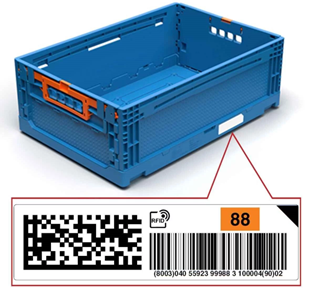Summary Supply Chain Café #11
Supply Chain Café by PICS Belgium 26/01/2023
Authors: Wouter Schaekers (P&G) and Karen Arkesteyn (GS1)
Moderator: Wim Farasyn, board member PICS Belgium

Supply Chain Café by PICS Belgium 26/01/2023
Authors: Wouter Schaekers (P&G) and Karen Arkesteyn (GS1)
Moderator: Wim Farasyn, board member PICS Belgium
Supply Chain Café by PICS Belgium 26/01/2023
Authors: Wouter Schaekers (P&G) and Karen Arkesteyn (GS1)
Moderator: Wim Farasyn, board member PICS Belgium
Every last Thursday of the month PICS Belgium organizes a one hour web-discussion on specific supply chain topics, introducing the topic and leaving room for discussion amongst participants.
For the January session Wouter Schaekers (P&G) and Karen Arkesteyn (GS1) introduced the Smartbox concept GS1 is launching at European scale after a test with German retailers and producers. The session was animated by Wim Farasyn, Lanark and board member at PICS Belgium.
Today most retailers receive products from producers in carton boxes. For their automated warehouses they often need to unpack these cartons in plastic totes to allow for manipulation in the warehouse and picking for or shipping to the stores. Some still ship cartons to the stores but this requires quite a lot of effort manipulating waste that is often returned to the DC’s. Often private crate initiatives link to warehouse automation at the retailers. The ultimate goal of GS1-smartbox is to provide an industry standard crate for delivery to the retail that can be used in the warehouse solutions and distribution to the stores. To save space in the return process the crate is a foldable one. The idea behind Smartbox is to get suppliers and retailers into one standard system.

The size of the box has been chosen to be modular, fitting perfectly on Euro-pallets. The project in Germany was a testcase and proved to be advantageous for the complete supply chain, reducing costs, complexity and waste and increasing flexibility, e.g. for lower volumes items where no longer “sandwich pallets” are required. The crates are also strong enough to support making high pallets, thus reducing required truck space for delivery and distribution. The Colruyt experience with crates showed a strong reduction in CO2, handling and number of trucks, making also automation more advantageous.
For the suppliers of the retailers this of course requires rethinking their end of line packaging, which is today often automated and oriented to carton packing. This is the reason why GS1 took the smartbox initiative, to support producing companies delivering to retailers to set a market standard that can be automated.
The crates have to be working in a circular economy, picking them up after use, cleaning them and bringing them back in empty state to the producers delivering retail. This also comes with a cost that needs to be compensated by the advantages. Lots of organizations pay transportation weight based. These crates add weight compared to carton. During the German test there was no influence on the transportation rate since it concerned Full Truck Loads (FTL) that were never at maximum weight. But it is indeed something to analyse when rolling out at a broader scale. Also the number of turns a crate can average last is something that was questioned, but the German test program did not report on this. A questions was raised on customs declarations of this type of reusable packaging, but also here not experience was yet available.
In Germany GS 1 has in been tendering the whole German volume of totes for an open pool setup. One vendor has been selected for the total market and the retailers do not need to sort boxes. This model choice will need to be evaluated when scaling up to more crate types and countries.
After the discussion conclusion was that the solution is feasible, possible and certainly sustainable. Other solutions exists, but a market standard is required to move the whole market into this type of solutions. GS1 is only facilitating and helping their members and are not participating in the pool of crates. This is up to the industry. The smartboxes will be equipped with GS1 barcodes allowing for better visibility and control over the whole chain.